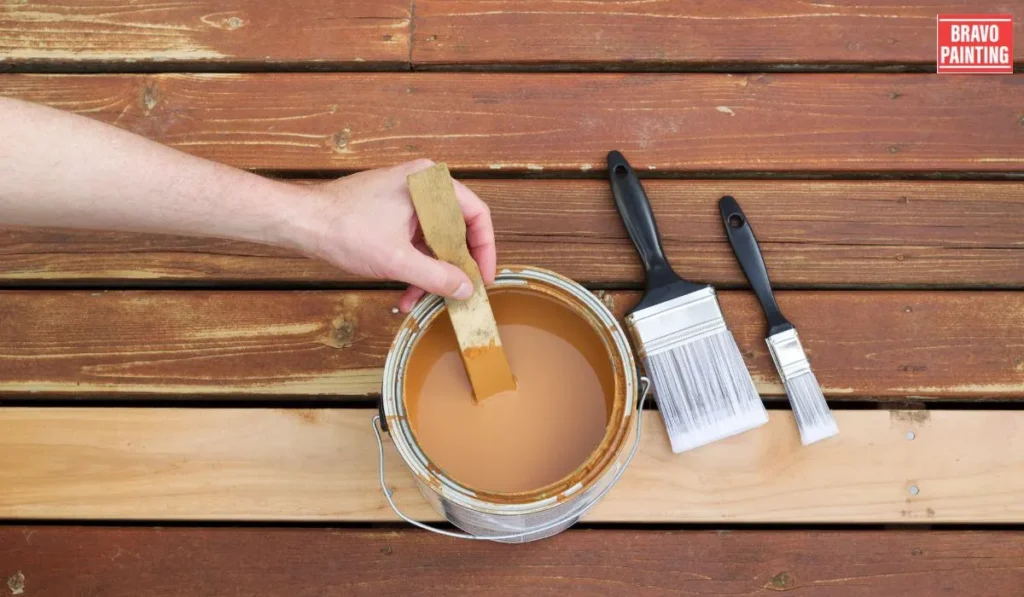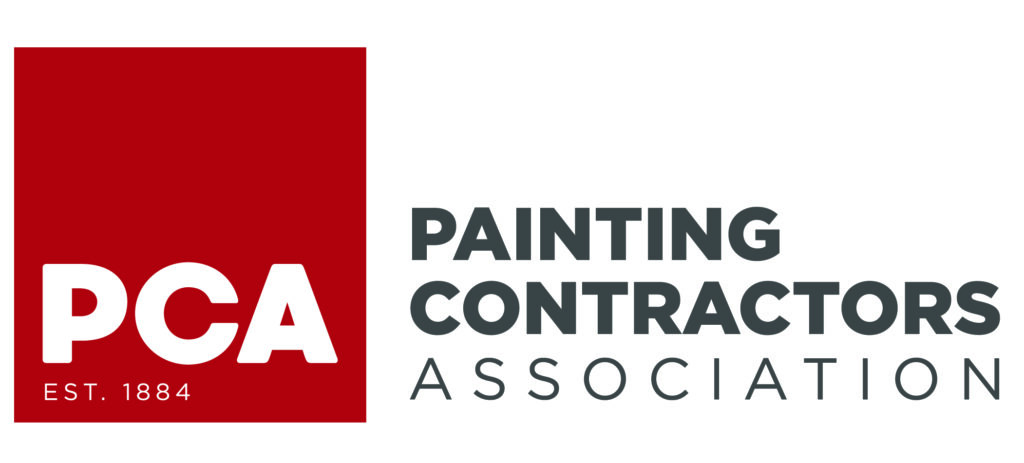Maintaining your outdoor residential spaces is essential to keeping them beautiful and functional.
A nicely stained deck creates a stunning appearance for your home and helps protect the wood from rotting.
Knowing when to call for professional help in staining your deck is essential for any homeowner looking to extend the lifespan of their outdoor living area.
Here, four key signs have been demonstrated that show the requirement of professional attention to your deck.
While discussing it, the timeliness factor when staining residential backyard design and outdoor spaces must be highlighted.
Sign 1: Faded Color:
One of the most evident signs that your deck needs professional staining is the fading of its color.
For decades, the robust and vibrant UV rays of the sun break down pigments in the stain and thus result in a wood staining, dimmer look.
While fading may appear merely cosmetic to most, it sends a warning: the protective layer of the wood from environmental damage is breaking down.
Why Color Matters to Wood Protection
Color to your deck offers more than just cosmetic functionality.
Here’s why keeping the color in place is very important.
- Moisture Barrier: A color-stained deck will repel water, reduce moisture penetration, and prevent rot or mold within the wood.
- These are perfect for outdoor residential areas constantly exposed to the elements.
- Temperature Regulation: The shade of the stain may also determine the temperature control.
- Darker shades absorb heat, and lighter shades reflect them, though this may also make your deck a relaxed, comfortable outdoor area.
Excessive Fading Signs
A slight fading of a deck is normal, but there is also a sign that may warn you that fading has gone beyond the standard conditions.
Here are the signs to look out for:
- Variegated Color: Stains lightened significantly more than others on the finish, suggesting this protective stain has broken down unevenly.
- Exposure of Bare Wood: One finds exposed wood grain, meaning the finish has broken down entirely and leaves elements open to view.
- Powdery Dust: A powdery appearance on the surface of the wood means that it is breaking away because of exposure to ultraviolet light.
- Loss of Water Repellency: If water no longer forms beads on the surface and instead penetrates the surface quickly, it is an indication that the stain protective layer is damaged.
Sign 2: Water Absorption:
A painted deck would repel water.
Bead-like droplets would form on the surface.
If so, that indicates that the wood is doing its job of repelling moisture.
If the deck’s water absorption occurs immediately and there are dark spots left behind, you should consult with professionals concerning the staining of the deck.
Simple Tests Determining Water Absorption
There are several basic tests that homeowners can perform to determine a deck’s absorption of water:
- Water Drop Test: Raindrops on the deck.
- If droplets form beads, stain works; you need to restain if they absorb.
- Spray Bottle Test: Spray spot on the deck; if some areas absorb fast, they urgently need attention.
- Dark Spot Test: After a rain, look for dark spots where the wood sucks in moisture which will indicate that the protective layer is broken somewhere.
It requires frequent staining to maintain the moisture barrier, keep your deck fresh, and enhance your residential outdoor space.
Sign 3: Visible Cracks and Splinters:

Cracks and splinters indicate that your deck requires immediate attention, as cracking and splintering show it.
Conditions such as weather and daily use cause wood to dry out, thus cracking and splintering.
While they mar the aesthetic value of a deck, they are certainly hazards for children and pets alike.
Prevent Cracking and Splintering
Maintain your deck’s beauty by doing the following:
- Regular Inspection: A routine check-up should be performed to determine the likelihood of cracking and splintering.
- Early indications can save the damage from becoming worse.
- On-Time Repairs: Minor issues must always be attended to immediately so they won’t worsen.
- Maintenance Staining: Good quality stain must be applied every 2-3 years to keep the surface protected by wood.
- Proper Cleaning: Debris and dirt have to be cleaned off the deck.
- This can even trap moisture into the wood and damage it further.
Better care for your deck, with the proper staining, will improve the design of your backyard area and will protect your outdoor living residential area from further damage.
Sign 4: Signs of Mold and Mildew:
Mold and mildew love water.
They thrive in dark places to grow, so they find decks easy to infest, especially if they are shaded all the time or not well-ventilated.
High humidity, standing water, and shady areas offer them the perfect breeding ground.
Health Hazards and Structural Damage Due to Mold
Mold and mildew can destroy your lovely deck’s outlook and expose you to serious health hazards and structural damage after some time.
Key issues are as follows:
- Health Hazards: Exposure to mold spores makes breathing difficult for people with asthma and allergies, while direct contact causes skin irritation and rashes.
- In the long term, this weakens your immune system and increases the episodes of illness.
- Structural Damage: Mold and mildew lead to wood decay, weakening deck components, and potentially creating unsafe situations.
- Furthermore, the stains from mold are tough to remove and can leave unappealing discoloration.
How Deck Staining Prevents Mold and Mildew Growth
Prevention of mold and mildew growth is a specific role of professional deck staining.
Here’s how:
- Breathability: Stains exert a barrier effect that prevents water penetration into the wood, thus decreasing the moisture content needed by mold.
- Surface Quality: Sealing the wood by staining will give a smoother surface with fewer dirt and moisture traps inside it.
- Easy to Clean: A deck maintained with stains is easier and easier to clean.
- Mold and mildew are removed early enough before severe damage is caused.
Conclusion
Good decking maintenance can identify signs and symptoms that tell you whether your deck needs professional staining or not.
That way, you will be put in an excellent position to deal with all those color fading, water absorption, becoming visible with cracks and splinters, and mold and mildew growths to maintain beauty and functionality.
Professional house painters have the experience and equipment to help restore your deck and keep it a beautiful and safe element in your residential backyard design for years.
FAQs
How often should I stain my deck?
Most professionals suggest that you stain your deck every two to three years; however, this will strictly depend on various factors like climate, the type of wood, and the volume of traffic your deck receives. If your deck is highly exposed to weather or receives lots of sunlight, it may need stains more often. You can also do it by conducting frequent inspections, which help identify fading and water absorption as characteristics that mean it’s time for a touch-up. In any case, knowing what to look for will keep the decks protected and looking their best.
Should I stain my deck, or should it be left to a professional?
Of course, there is nothing that prevents you from staining your deck by yourself, but ideally, you should consider hiring a professional. Professionals know how to prepare the surface, what type of stain is necessary, and apply it evenly for maximum protection. Failure to properly stain may lead to issues of peeling or flaking of the paint, further damaging the integrity of the wood. If you are unsure of the process or do not have the equipment, buying a professional can save you time and provide long-lasting finishes.
What stain for outdoor residential?
As much as the problem presented by the deck with its stain, you should choose a good stain if you want it to be long-lasting and look good. Choose good exterior-grade stains that can sustain use outdoors. These stains generally provide better protection against ultraviolet rays, moisture, and mildew. You may also opt for a transparent, semi-transparent, or solid color stain since each offers different aesthetic options and different levels of visibility of the wood. Check your local home improvement store or consult with professionals for a product that is ideal for your specific type of wood and outdoor conditions.
How do I know if my current stain is still effective?
One of the easy ways to determine whether your stain is still working is by performing a water drop test. Drop some drops of water onto the surface of your deck; if they bead up, you still have it working. But when they absorb right into the wood, the protective layer wears off and should be restained. Second, look for signs of fading, discoloration, or bare patches on the wood. Looking out for these signs regularly will keep your deck healthy.
What Do I Do if I Find Mold or Mildew on My Deck?
If you find mold or mildew on your deck, you should attend to it quickly to prevent the problem from spreading and worsening. Clean the affected areas by creating a mixture of water and mild detergent. Scrub away the growth with a stiff brush, rinse the area well, and let it dry completely.
If the mold remains, you’ll need a specialized mold-removing solution. After cleaning, determine whether your deck needs to be stained since most decks are only protected from future growth with a good stain coating. If you continue facing this problem, hiring a professional for deep cleaning and maintenance is a good idea.
What are the risks of not staining my deck?
Not staining your deck may lead to many problems that impact its aesthetics and functionality. Moisture and UV rays can cause it to warp, rot, or even crack if it is not stained correctly. Untreated parts will harbor molds and mildew, thus creating unhealthy conditions that contribute to further deterioration. Untreated wood may eventually become a pest nursery for termites and other insects, which, in the long run, might lead to costly repairs or even replacements.
It is thus a big step into making excellent investments in its protection.



